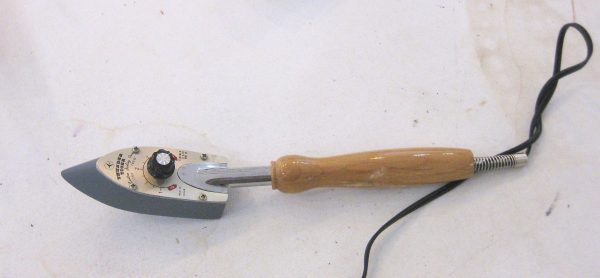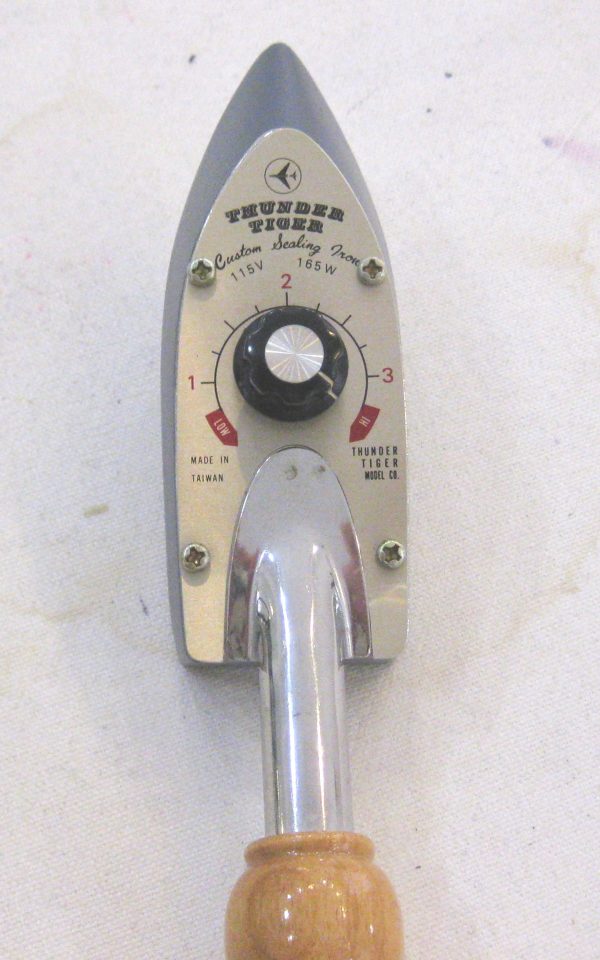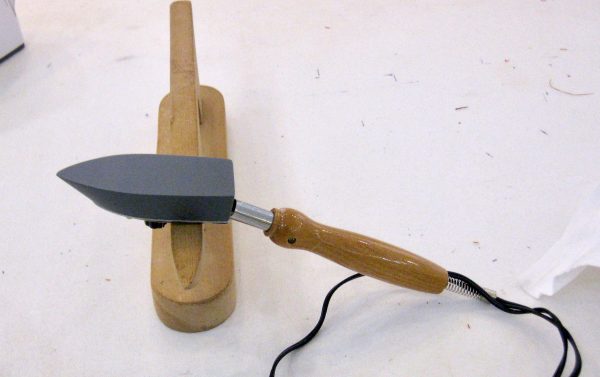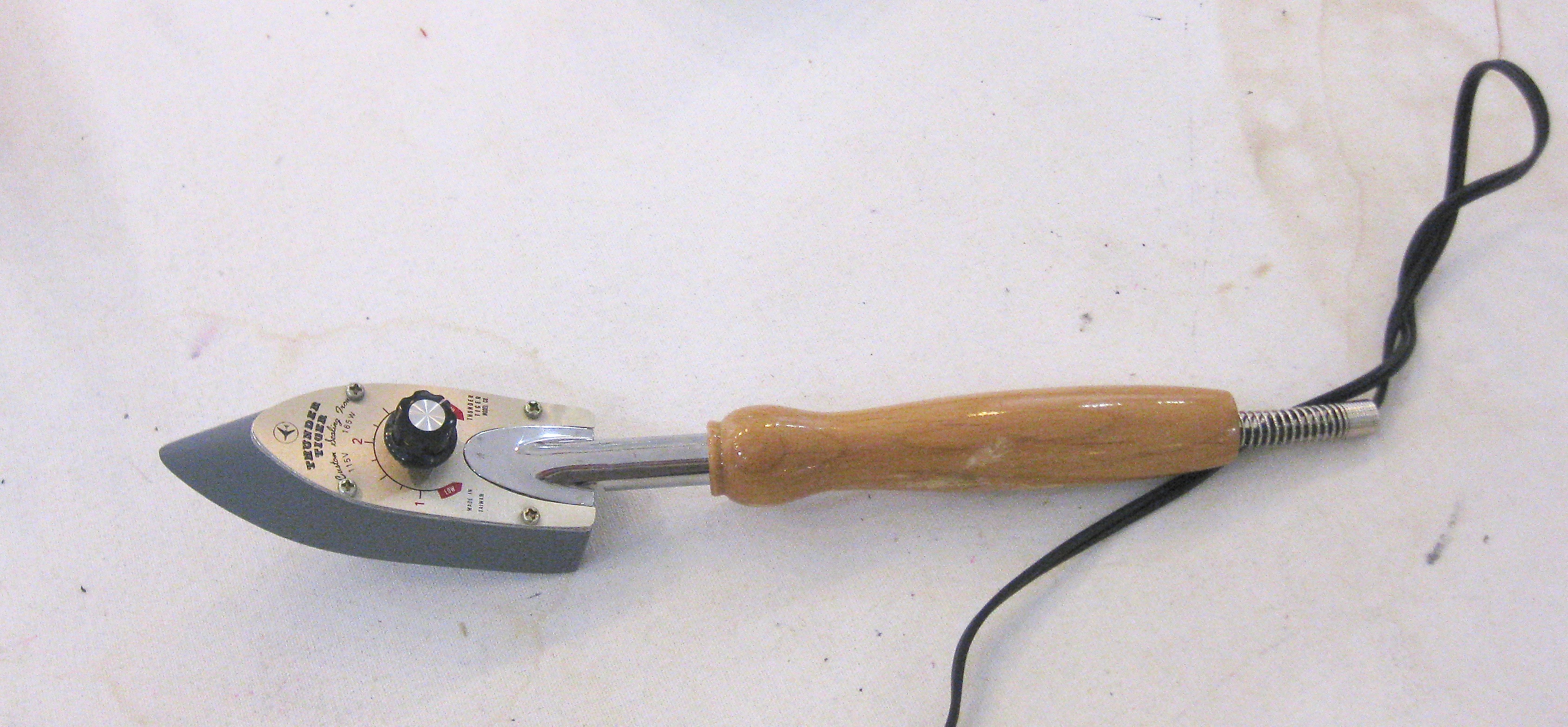Usually used in packing and shipping operations, a sealing iron can be a nifty tool to keep on hand in a sewing and design workroom too. It is a little larger than the miniature irons sold in fabric and craft stores – making it easier to use and handle – but not nearly as cumbersome as a regular iron.
Around here, we’ve got this little guy: Introducing the Thunder Tiger

Sealing irons come in a number of shapes and sizes. You want one that has a point and a rheostat, is preferably teflon coated, and has a slight convex curve to the sole plate.


It is going to allow you to get into little pleated and turned nooks and crannies easily while the curve of the sole keeps the heat constant but without the pressure a flat sole would put on the fabric below the pressing area.
Because of the way they are shaped, you will want to either buy a metal stand for it or rest it upside down over a clapper or wooden anvil.
